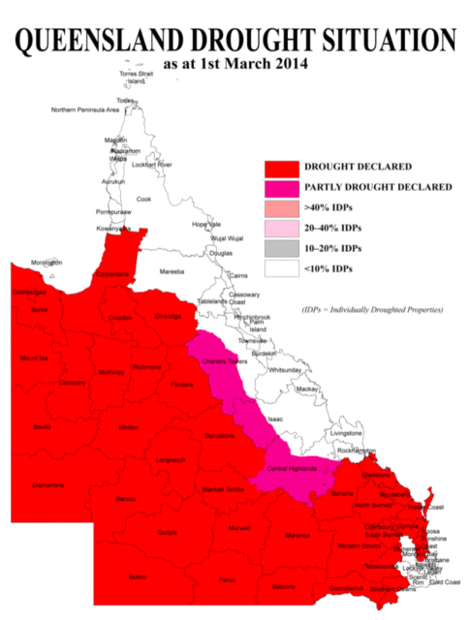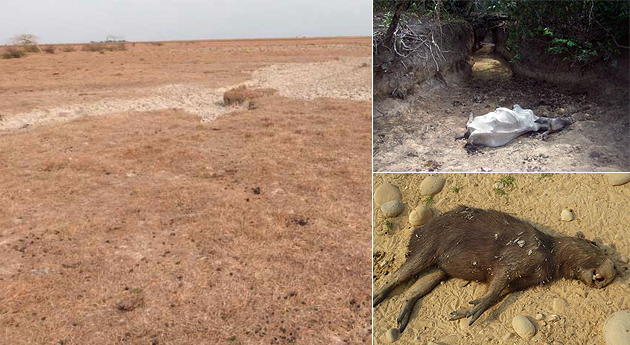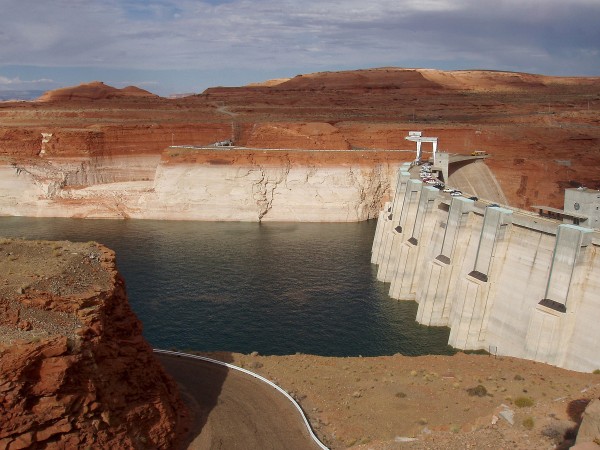
Queensland drought map for March 2014
It is official - this drought is Queensland's most widespread on record, with almost 80 per cent of the state now drought-declared.
Queensland's Agriculture Minister has announced the largest drought-stricken area ever for the state, with 15 new shires added to the list.
This takes the number of drought-declared shires to 38, and it is the first time large sections of the Queensland coast have been included.
Shires of Banana, Bundaberg, Cherbourg, Fraser Coast, Gladstone, Goondiwindi, Gympie, Moreton Bay, Noosa, North Burnett, South Burnett, Southern Downs, Sunshine Coast, Toowoomba and Western Downs have been added to the already long list, effective from March 1.
Minister John McVeigh says the failed wet season is the reason so many shires have been declared at once.
"It's really only that coastal strip of Queensland of roughly Rockhampton through to Cape that is not in drought, bar some other small locations around the state, so that does confirm that this is a more significant drought event than Queensland has ever seen before," he said.
"The wet season in these newly declared shires has been very poor with many areas missing out altogether. February, normally one of the wettest times of the year, has been particularly dry.


Comment: See:Parched: A new dust bowl forms in the heartland